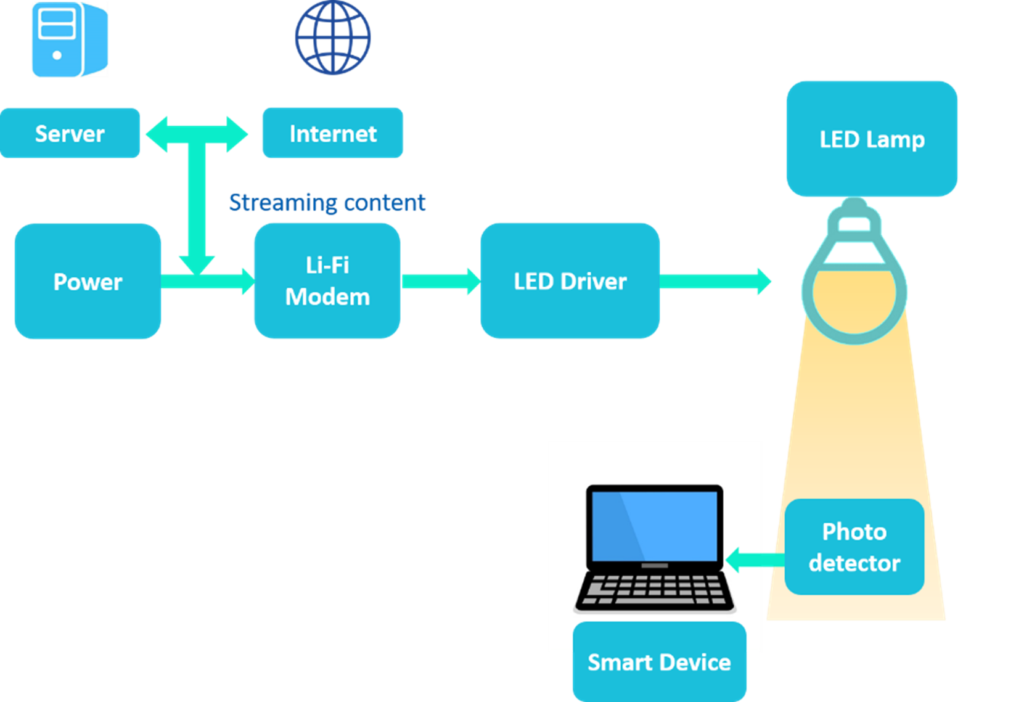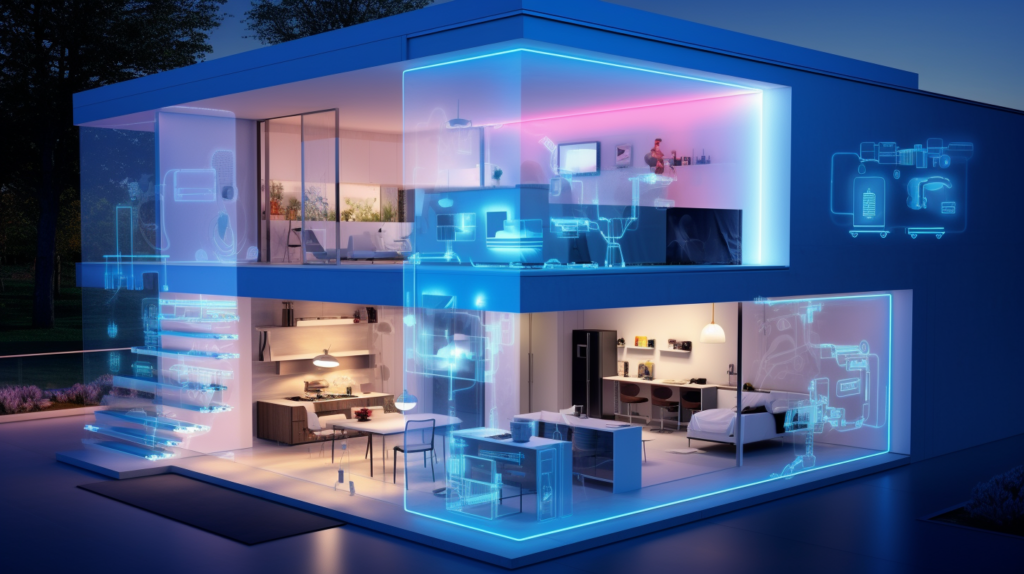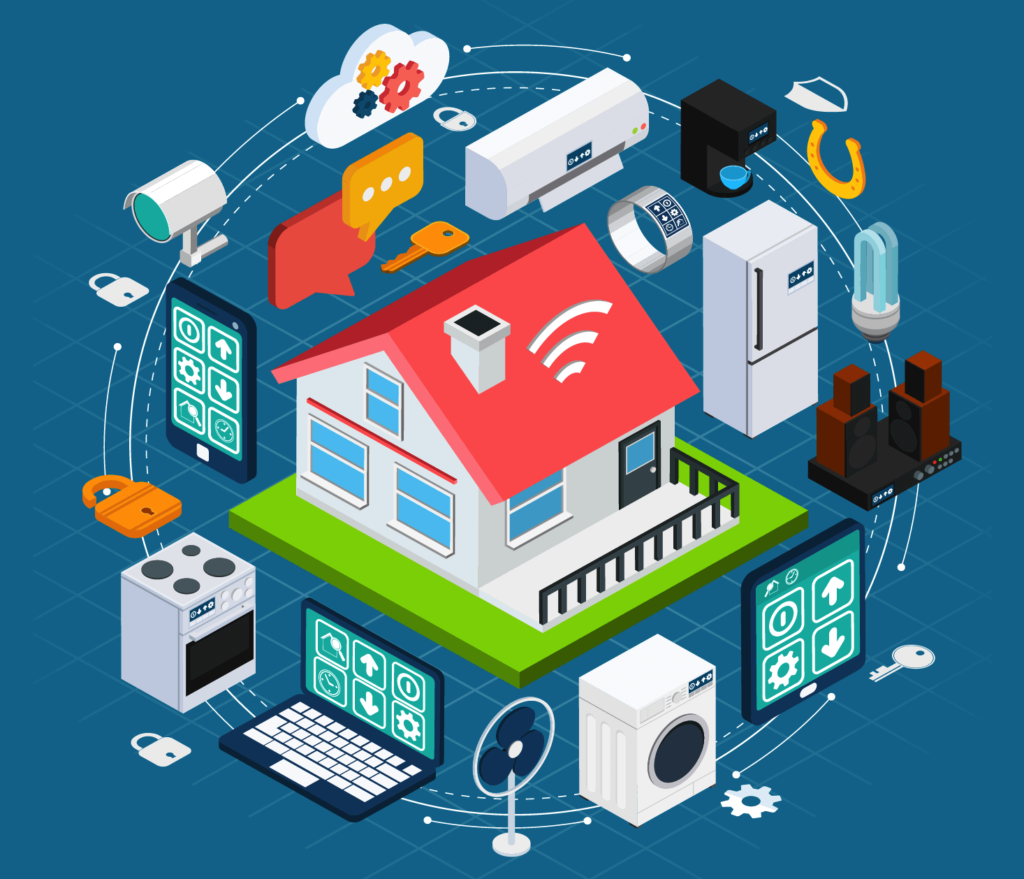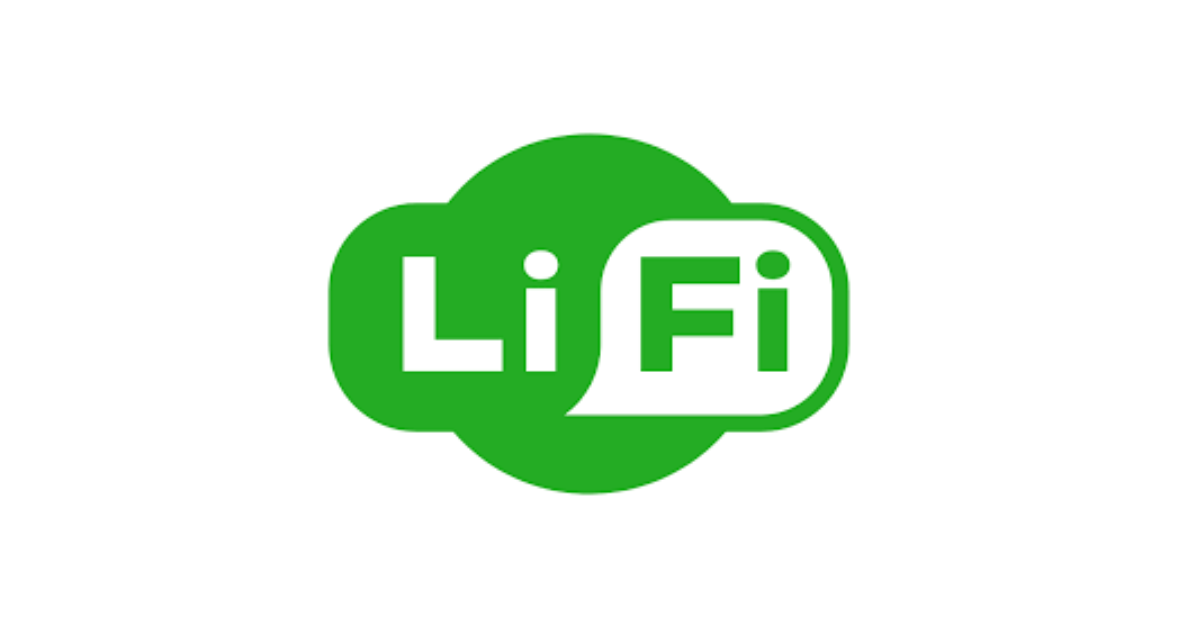In today’s fast-paced digital world, reliable and speedy internet access is crucial. While most of us are familiar with Wi-Fi, a new technology called Li-Fi is emerging as a potential game changer. In this article, we will explore what Li-Fi is, how it works, and why it might be the future of wireless communication.
What is Li-Fi?

Li-Fi, or Light Fidelity, is a wireless communication technology that uses visible light to transmit data. It was first introduced by Professor Harald Haas from the University of Edinburgh in 2011. Unlike Wi-Fi, which uses radio waves to send and receive data, Li-Fi leverages LED lights to achieve similar outcomes.
This innovative technology involves the rapid modulation of light signals, which are then detected and converted into data by a receiver. While invisible to the human eye, this modulation allows for high-speed data transmission.
How Does Li-Fi Work?
Li-Fi works by modulating the intensity of light emitted from LED bulbs at a rate so fast that it cannot be seen by the human eye. These modulations are captured by a photo detector and then translated into an electronic signal that can be decoded into data.

Here’s a simple breakdown of the process:
- A LED light bulb serves as the transmitter.
- Data is embedded into the light emitted by the bulb via modulation.
- A photo-detector (or receiver) detects these modulations.
- The receiver converts the changes in light intensity back into electrical signals, which are then transformed into data that can be understood by a computer or device.
Li-Fi has the potential to provide internet access anywhere light is present, such as homes, offices, and even airplanes.
Advantages of Li-Fi Over Wi-Fi
Li-Fi offers several advantages over traditional Wi-Fi:
Why Wi-Fi Might Be Obsolete Soon—Find Out How!
- Higher Data Transfer Speeds: Li-Fi can reach speeds of up to 100 Gbps, far surpassing the average speed of Wi-Fi, which typically peaks at around 100 Mbps. This increased speed is due to the higher frequency range of visible light compared to radio waves.
- Reduced Congestion: Wi-Fi operates on limited radio frequencies, which can lead to overcrowded networks, particularly in areas with high device usage. Since Li-Fi uses visible light, it avoids this issue entirely, reducing congestion and improving performance in dense environments.
- Enhanced Security: Because Li-Fi signals do not penetrate walls, the technology offers better security than Wi-Fi, which can be intercepted through walls. Li-Fi’s restricted range makes it more difficult for hackers to access data without being in the same room as the light source.
- Less Interference: Li-Fi is not affected by electromagnetic interference from other devices, making it ideal for use in environments like hospitals, airplanes, and nuclear power plants where radio frequency interference is a concern.
- Energy Efficiency: Since Li-Fi uses LED lights, it can serve a dual purpose: providing illumination and data transmission simultaneously, reducing energy consumption.
Challenges and Limitations
While Li-Fi offers promising benefits, it does face some challenges:
- Limited Range: One of the most significant limitations is that Li-Fi requires a direct line of sight between the transmitter (light source) and the receiver. Unlike Wi-Fi, which can penetrate walls, Li-Fi is restricted to spaces where light can reach.
- Reliance on Lighting: Because Li-Fi depends on visible light, it is less effective in dim or dark environments. In some cases, it may require keeping lights on constantly, which could lead to energy inefficiency or discomfort in certain settings.
- Infrastructure Requirements: Implementing Li-Fi on a large scale would require substantial changes in infrastructure, such as installing LED light bulbs and receivers in homes, offices, and public spaces. This could be a costly and time-consuming process.
- Limited Mobility: While Wi-Fi allows for seamless mobility, Li-Fi users must remain within the range of the light source, making it less flexible for users who move around frequently.
Applications of Li-Fi

Despite these challenges, the potential applications of Li-Fi are vast and varied. Some of the most exciting possibilities include:
- Smart Homes: Li-Fi could play a crucial role in the evolution of smart home technology. Homeowners could enjoy ultra-fast internet through their existing lighting systems, allowing seamless control of smart devices, such as appliances, thermostats, and security systems.
- Healthcare: In hospitals, where radio waves can interfere with sensitive medical equipment, Li-Fi offers a safer alternative. Li-Fi-enabled LED lights could provide fast, secure, and interference-free internet access, improving communication and patient care.
- Airlines: Li-Fi could revolutionize in-flight internet access, which is often slow and expensive. By installing Li-Fi systems in the cabin’s lighting, airlines could provide passengers with high-speed connectivity during flights.
- Underwater Communication: Since radio waves cannot penetrate water, industries like marine research and defense can use Li-Fi for underwater communication.
- Retail and Advertising: Retailers can use Li-Fi for indoor positioning systems to track customer movement in stores or send targeted advertisements and offers based on a customer’s exact location.
The Future of Li-Fi

As technology continues to evolve, Li-Fi has the potential to complement and even surpass traditional Wi-Fi networks. Although still developing, advancements in LED technology and the demand for high-speed, secure internet are driving Li-Fi’s growth. According to some estimates, the Li-Fi market is expected to be worth $75.5 billion by 2025.
Li-Fi may soon integrate into the Internet of Things (IoT), connecting everything from smart homes to autonomous vehicles.
Conclusion
Li-Fi holds the promise of faster, more secure, and less congested internet access. While there are still technical and infrastructural hurdles to overcome, the potential applications of this technology are vast. From healthcare to retail to home automation, Li-Fi could play a significant role in the future of wireless communication.
As the demand for faster and more reliable internet grows, Li-Fi might just be the light at the end of the tunnel.


